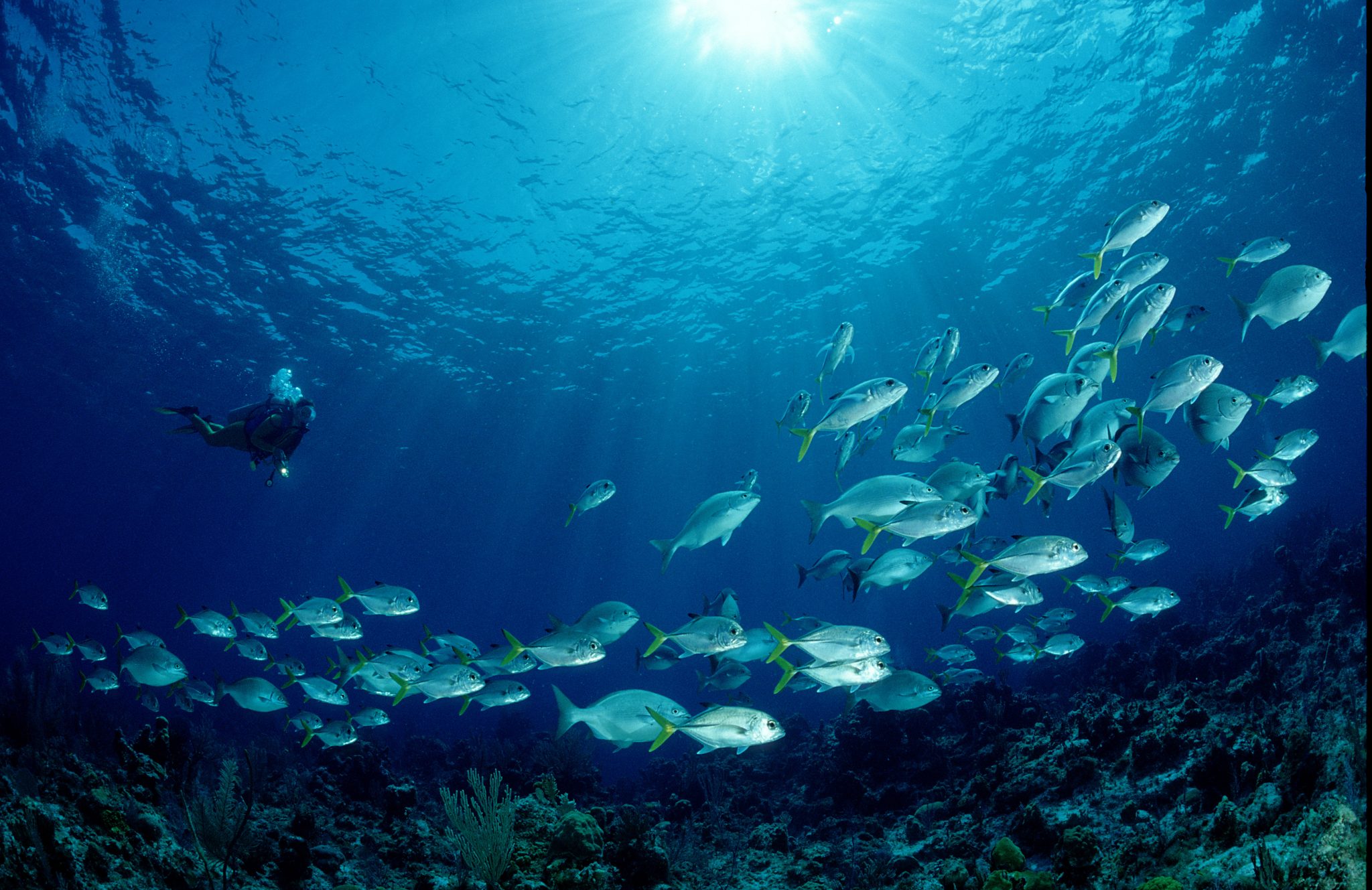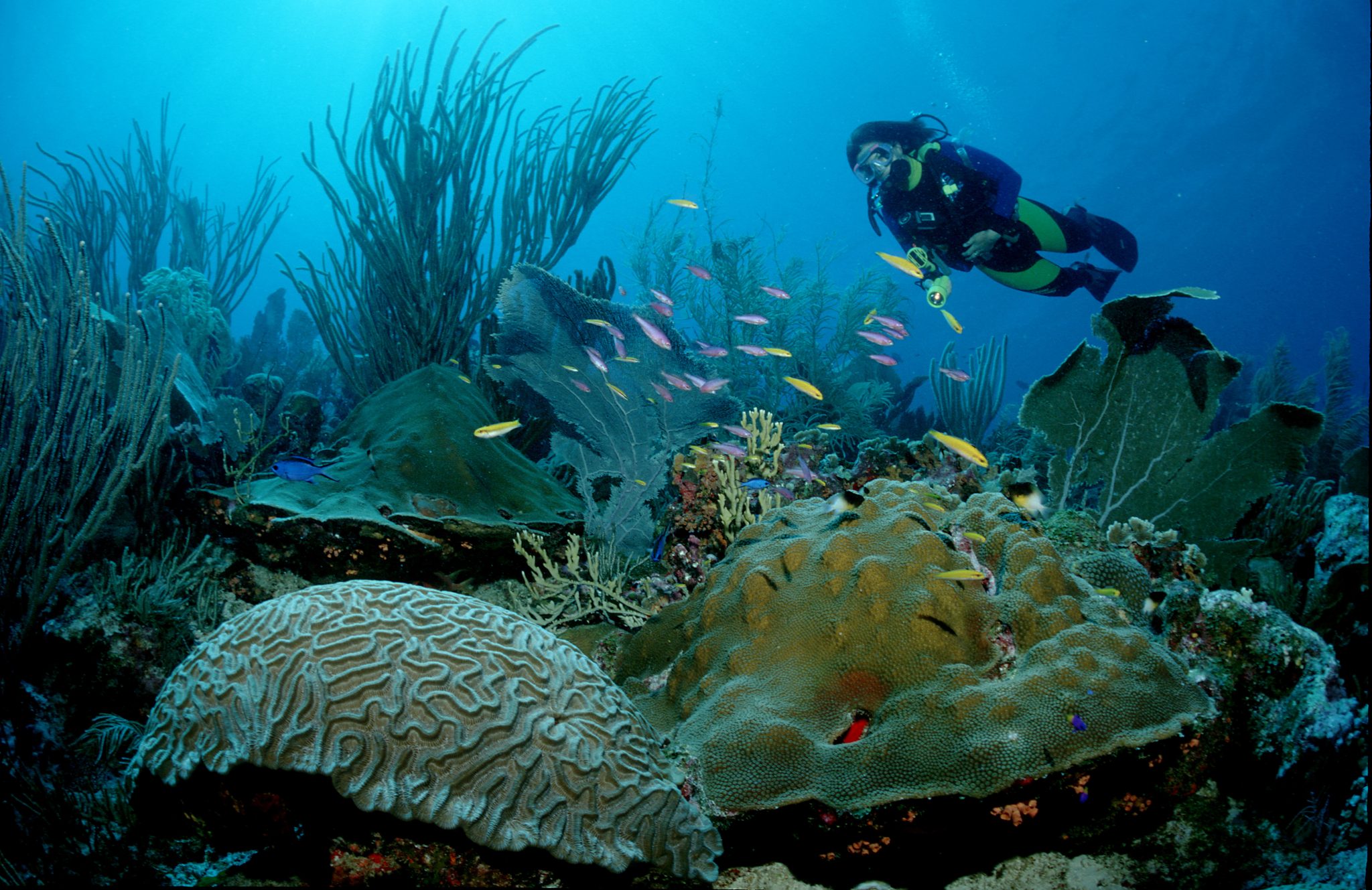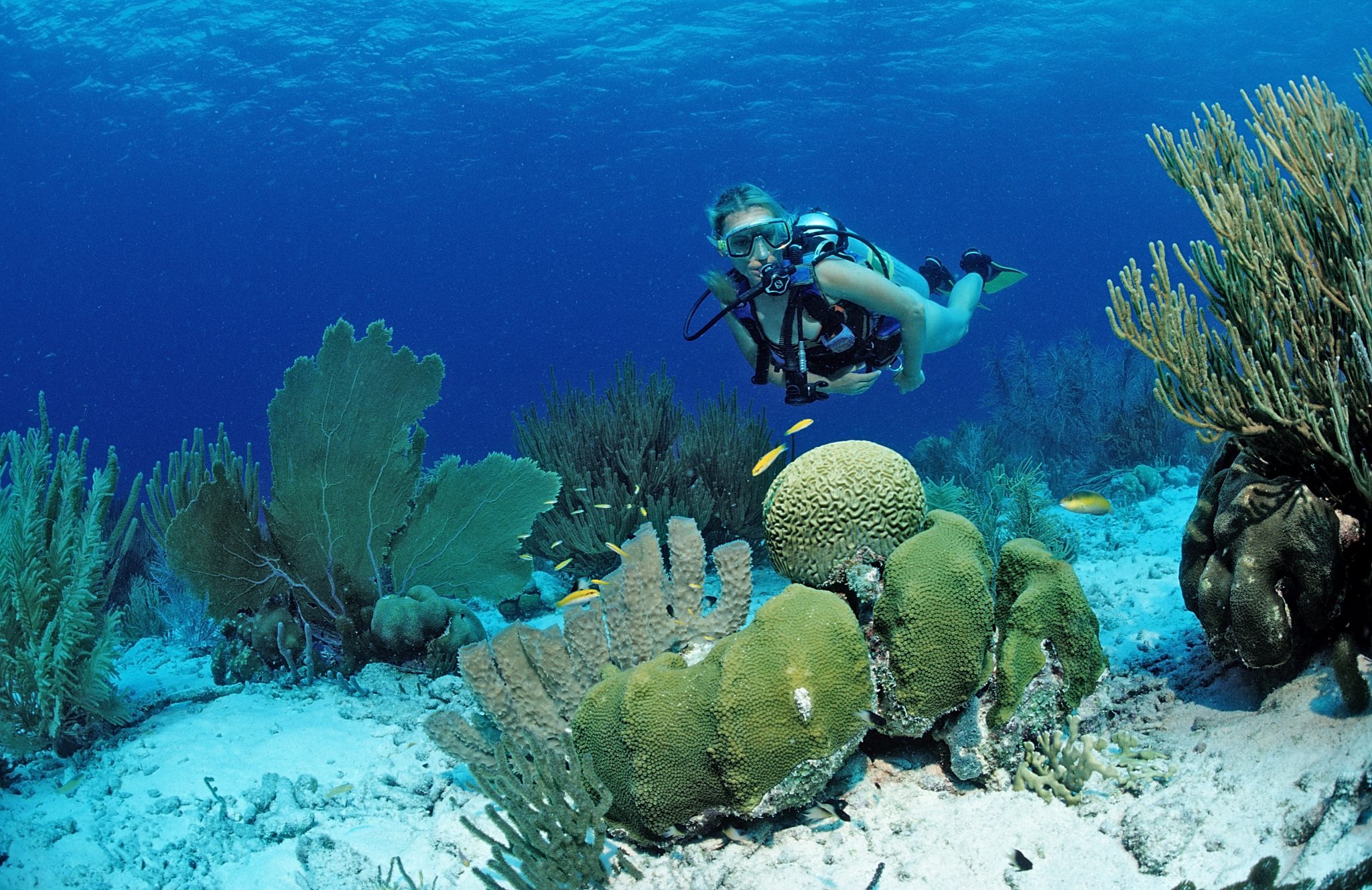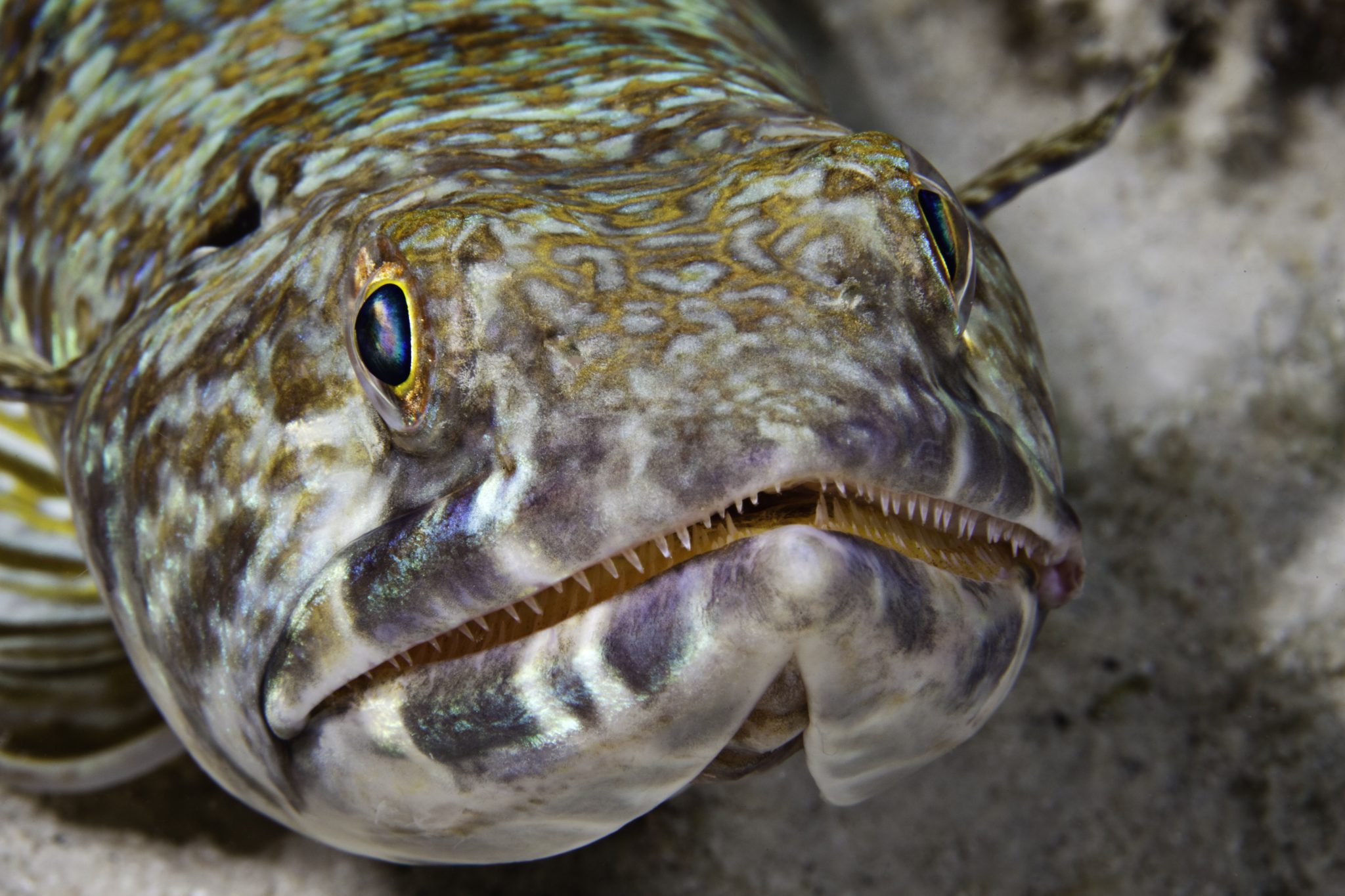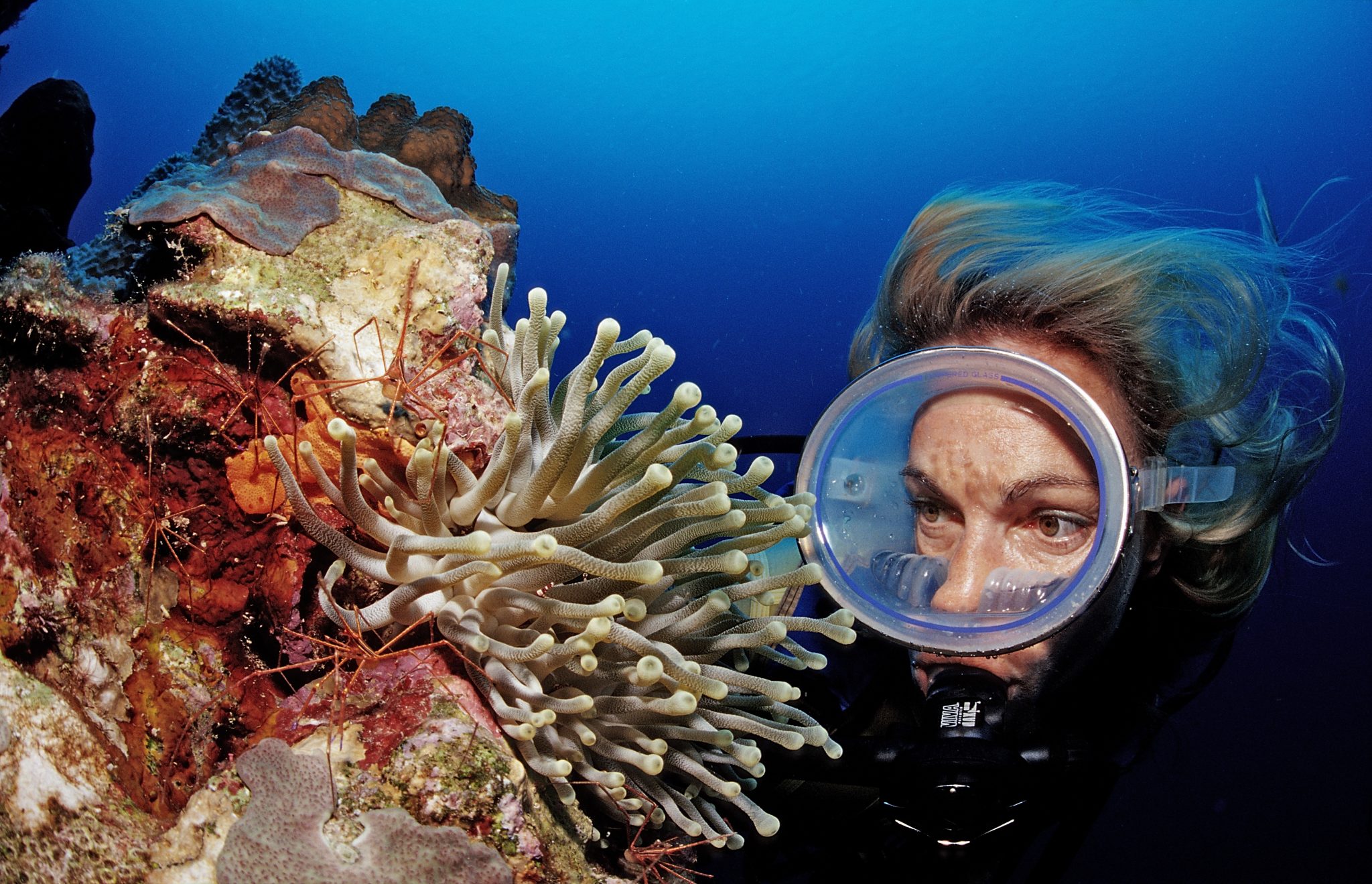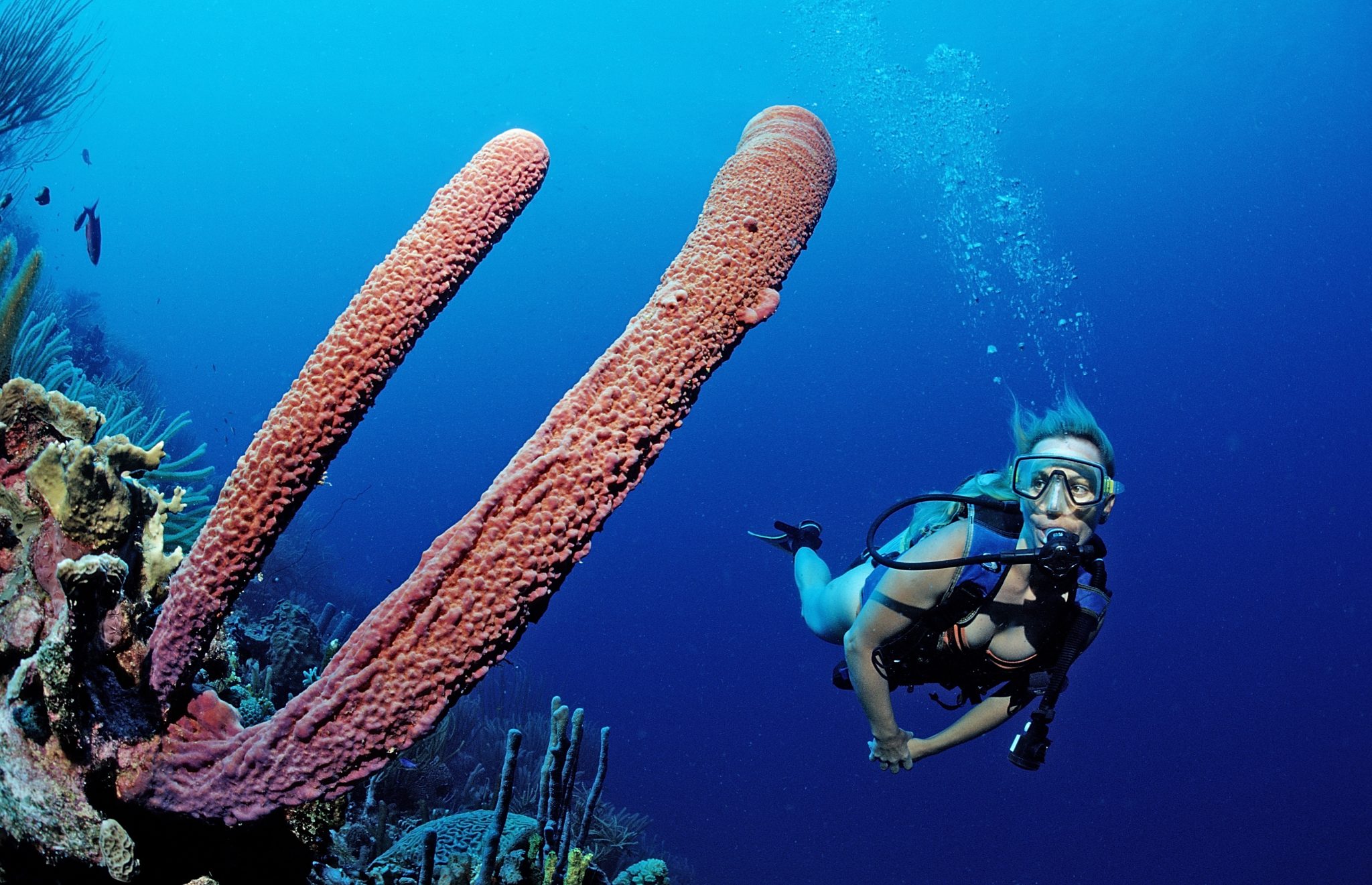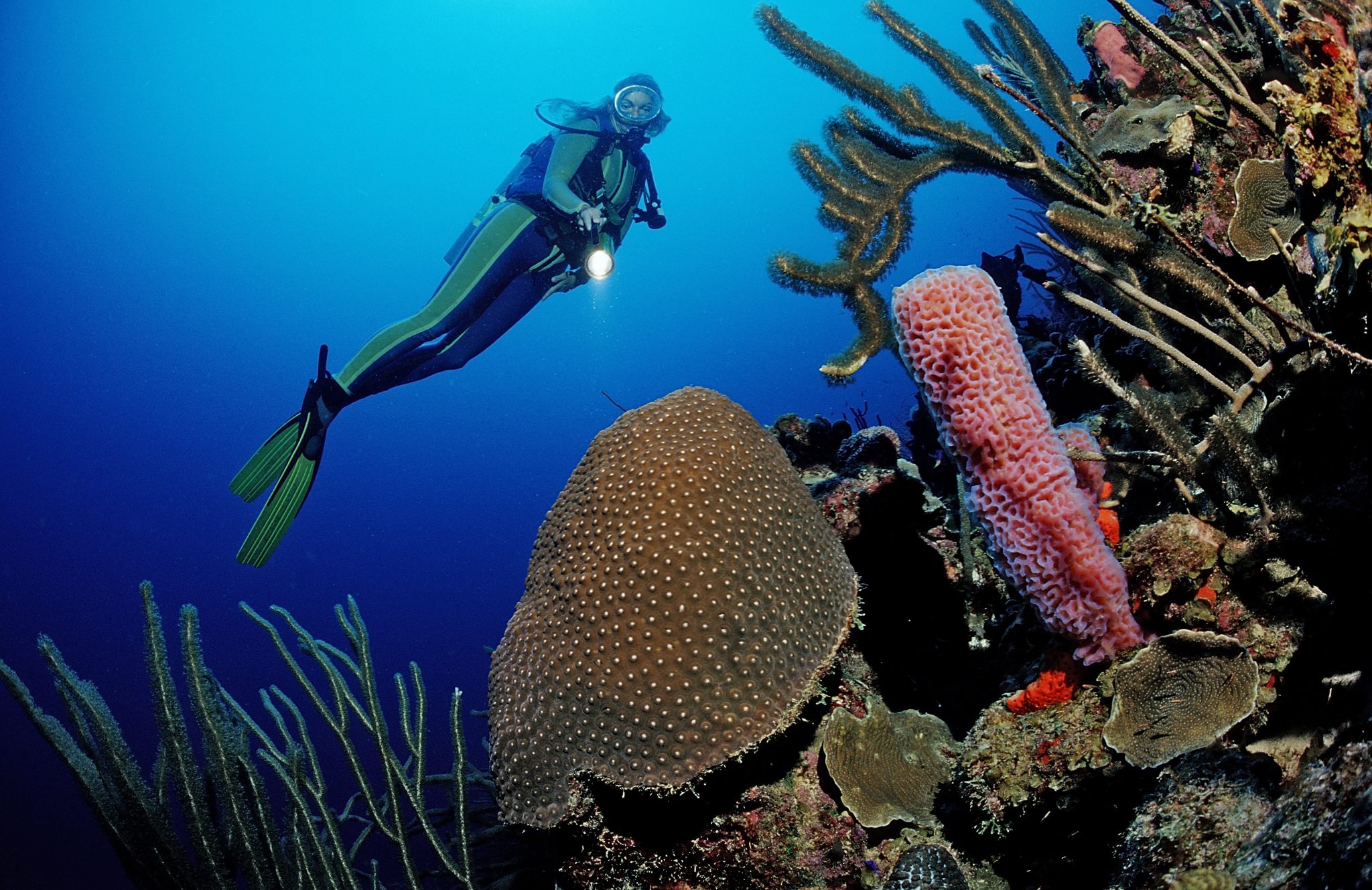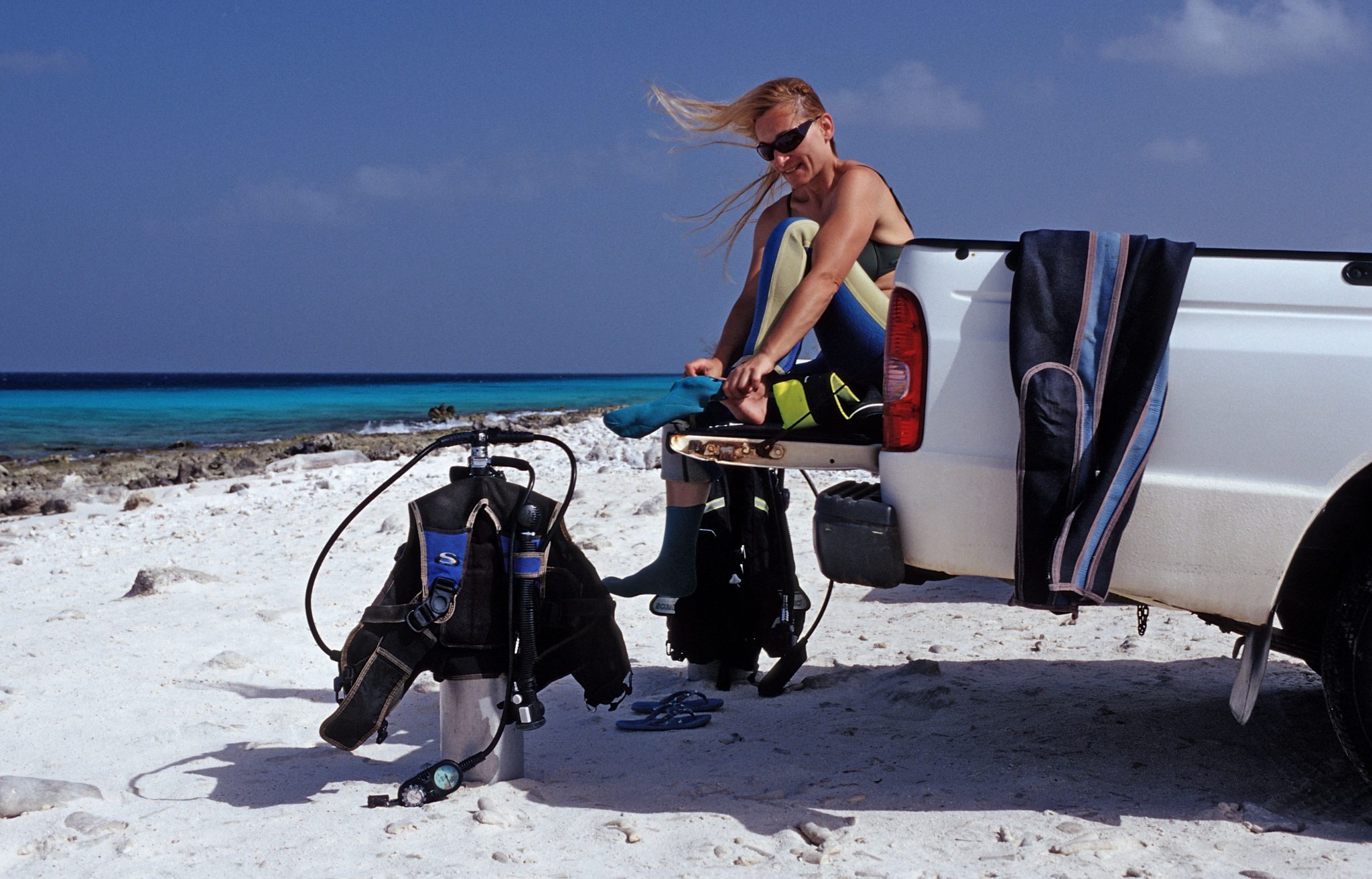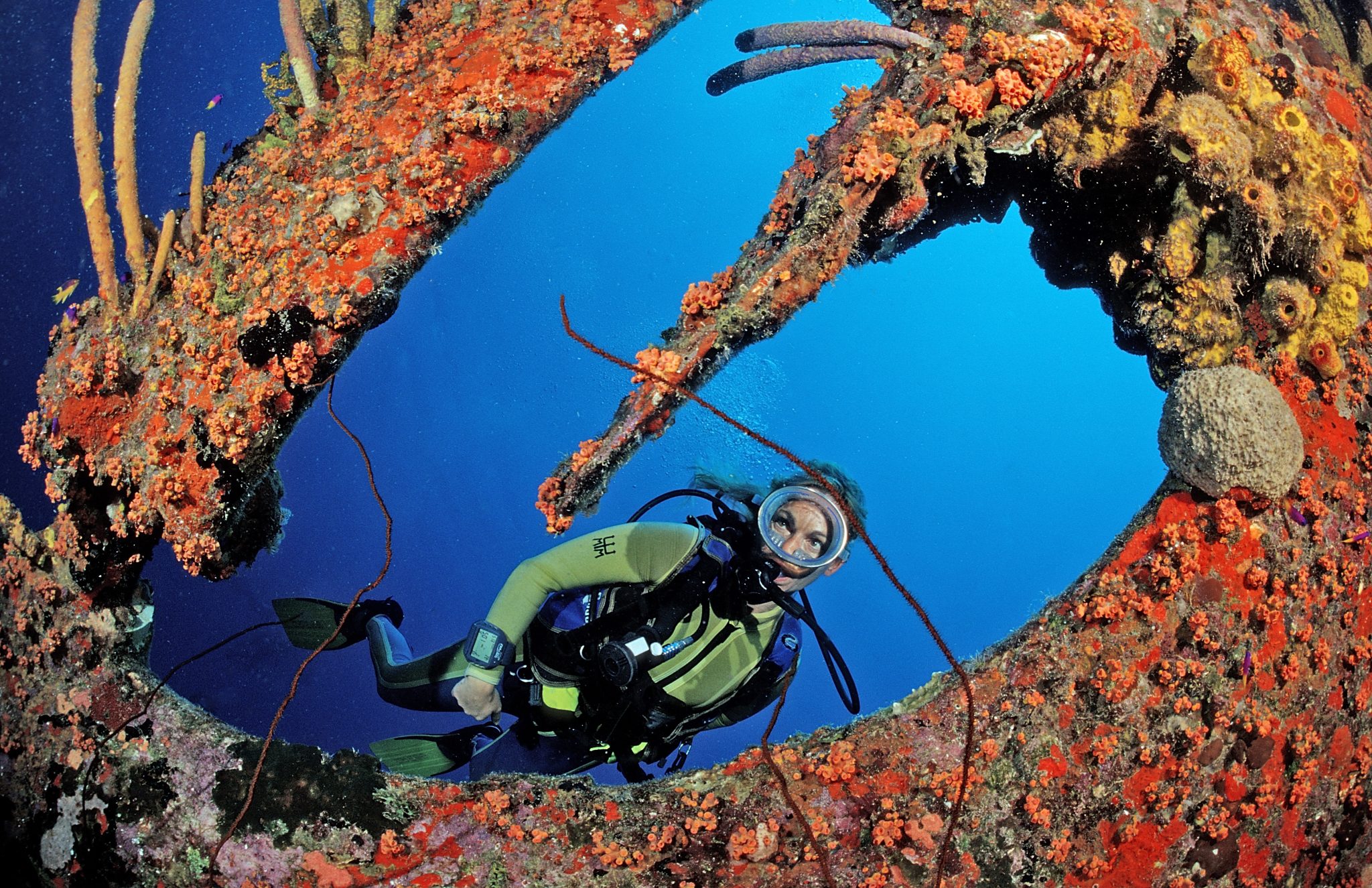

Overview
Fact File
| Capital | Kralendijk |
| Population | 24,000 |
| Languages | Dutch, Papiamento |
| Time | GMT-4 |
| International Dialling Code | +599-7 |
| Currency | US Dollar, USD |
| Tourist Board | |
| International Airports | Flamingo Bonaire International Airport (BON) |
About The Diving
The Bonaire National Marine Park has 86 named dive sites, over 57 species of coral and 350 fish species. The whole island is a preserve so it is not allowed to cause damage or remove anything from the water.
The islands tourism sector is set up to cater for scuba divers, with most resorts and hotels offering on-site dive shops or having an affiliated dive operation for guests. The surrounding coral reefs are easily accessible from shore making Bonaire one of the best shore diving locations in the world.
The reef is a short swim from shore, the sites are clearly marked and have permanent moorings. The main road runs the length of the island making all 60 shore dives easily accessible. Renting a 4WD vehicle is a great way to get out and explore all the sites.
Video
Dive Highlights
1000 Steps
This site is down 67 steps, which feel like a whole lot more on the way back up! However this dive is certainly worth it, with stunning towers of star coral attracting a wide variety of marine life. Turtles, manta rays and whale sharks have all been sighted here. The site is suitable for all levels going from 3-30m depth.
Alice in Wonderland
This double reef offers lots to see and nice conditions for underwater photography. Healthy coral and a wide range of species make for an engaging and beautiful dive.
Andrea 1 & 2
These two sites are fantastic for snorkelling and for less experienced divers. Friendly parrotfish, anemones and soft corals provide a kaleidoscope of colour and interest. Seahorses are seen regularly and both sites are easily accessible.
Bari Reef
Home to over 300 fish species Bari Reef is known as one of the best dives in the Caribbean for biodiversity. It is an easy shore dive accessible from the pier via a set of steps. The site boasts lots of macro life including seahorses and is suitable for snorkelers and beginners with little to no current and shallow depth.
Forest
This site on Klein Bonaire is home to a forest of gorgonians, which enjoy the moderate currents which can sweep the area. A large cave at 23m is often frequented by loggerhead turtles, nurse sharks or a green moray and at 30m divers can see black coral. This site is suited to advanced divers.
Hilma Hooker
The Hilma Hooker is a 72m long freighter wreck at 18-30m depth. Seized for illegal smuggling, she fell into disrepair and sank in 1984 and is now an artificial reef full of life. She is dived by shore or boat and is a very popular site for advanced divers and underwater photographers.
Karpata
This site can be dived from shore or by boat and goes from 6-30m with good visibility and excellent panoramic views. The large ships anchors embedded in the coral make for good wide angle photos. Karpata has many elk horn corals and is a very popular site for turtles and the occasional pelagic.
Munk’s Haven
On the west of Klein Bonaire Munk’s Haven features a cleaning station on the coral formations beside the 30m drop off. Large groupers can be seen and the soft corals are home to lots of life. This site has an abundance of tropical fish and is excellent for underwater photography.
Nukove
Nuke has some of the most pristine reef in Bonaire, located in the northwest of the Washington Slagbaai National Park. This more remote site is reached by a drive along an unpaved road to the beach where divers can walk into the water. Larger staghorn coral gardens provide a resting area for nurse sharks and are home to numerous fish species.
Ol’ Blue
This site is located north of 1000 Steps, off a coral beach. You can get a decent depth easily, whale sharks and other pelagics have been seen here, while schooling fish and friendly angel fish are commonly seen swimming around the huge plate corals.
Red Slave
At the southern end of the island this site is located next to the orange slave huts. This site is challenging and for experienced divers and in good conditions only. The strong currents which make the diving more difficult also bring in the larger life, schools of bait fish attract predators. Horse-eye jacks, turtles, manta rays and eagle rays can be seen on this exhilarating dive.
Salt Pier
This 12-21m deep site is suitable for beginners with calm conditions and has excellent opportunities for photography. Accessible by boat or shore, permission must be sought from local dive shops if you are planning a shore dive. The pillars of the Pier are encrusted with sponges and corals, large numbers of fish shoal in the shadows and turtles, reef squid, eagle rays and octopus are often seen.
When To Go
Bonaire has a warm, sunny climate and good dive conditions year round. The hurricane season is June to November, however Bonaire is located just south of the hurricane belt and so often has nice conditions even in these months. May to October offers lower prices and fewer crowds outside the peak winter season.

